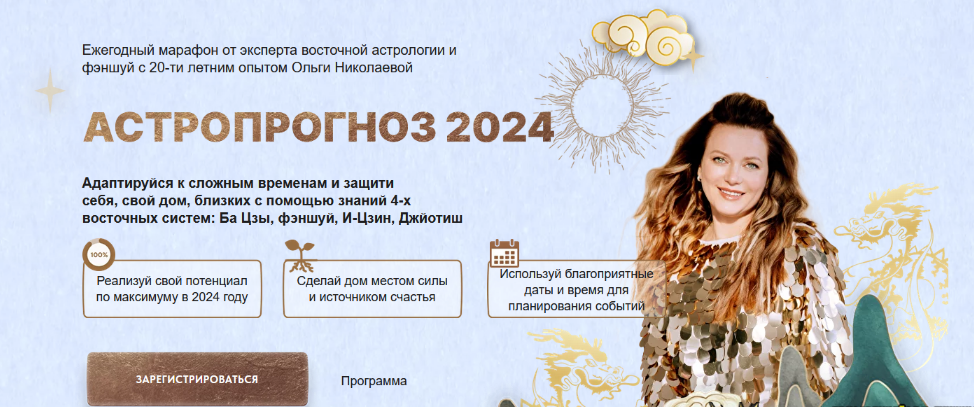Приложение
Как установить приложение на iOS
Смотрите видео ниже, чтобы узнать, как установить наш сайт в качестве веб-приложения на домашнем экране.
Примечание: This feature may not be available in some browsers.
Вы используете устаревший браузер. Этот и другие сайты могут отображаться в нём некорректно.
Вам необходимо обновить браузер или попробовать использовать другой.
Вам необходимо обновить браузер или попробовать использовать другой.
Здоровье / Внешний вид [Анастасия Лунегова] Клуб осознанных тренировок. Март (2024)
- Пользователь tttx
- Дата Здоровье / Внешний вид / Питание

ОПИСАНИЕ:
Клуб осознанных тренировок. Март 2024 [Анастасия Лунегова]
Клуб Осознанных Тренировок
система, которая дает результаты
Создайте тело своей мечты. Тренировки любого уровня сложности, безопасные для суставах
Стройное и здоровое тело за 40 минут в день.
Клуб Осознанных Тренировок
это фитнес-клуб у вас дома, в котором никогда не скучно. 1000 человек ежедневно тренируется вместе
Выбирай свой уровень нагрузки: для новичков или продвинутых и двигайся по готовому плану
Тренируйтесь по записанным урокам или в режиме реального времени с другими участниками клуба.
Все эфиры сохраняем в записи (доступны в личном кабинете)
Не тратьте время...
Здоровье / Внешний вид [Маша Блинова] Абонемент на месяц к прямым эфирам Masha.fit. Март (2024)
- Пользователь tttx
- Дата Здоровье / Внешний вид / Питание

ОПИСАНИЕ:
Абонемент на месяц к прямым эфирам Masha.fit. Март (2024) [Маша Блинова]
Полноценный абонемент у вас дома без потери эффективности
Не «закачаться». Не «похудеть». Не «на завтра».
Правильный фитнес — как пазл, который мы составили для вас, чтобы вы пришли к цели и удержали результат.
Минимальный инвентарь
Список и рекомендации по покупке или бесплатные домашние аналоги.
30 — 60 минут
Оптимальное время, чтобы вы не устали. Чередуем длительность с умом.
Комплексные занятия
Все занятия дополняют друг друга и задействуют все части тела.
Вам нужен абонемент, если вы:
- Устали «убиваться» на...
Личностный рост [Надежда Майн] Мышление (2024)
- Пользователь tttx
- Дата Саморазвитие / Психология / Эзотерика

ОПИСАНИЕ:
Кому полезно участие в семинаре
- Психотерапевтам
- Психологам
- Психиатрам
- Тем, кто всерьез хочет разбираться в психоаналитических концепциях
- Как развивалось понимание процессов мышления в психоанализе, основные авторы и их идеи
- Что такое мышление
- Первичный, вторичный процессы мышления
- Символическое мышление
- Патология мышления
- Психический конфликт и мышление
- Связь мышления и аффетов, эмоций
- Творческое мышление и сублимация
- Глубокое понимание психоаналитических концепций, классических и современных...
Астрология [Евразийский Астрологический Университет] Астрология - мост из прошлого в будущее (2024)
- Пользователь tttx
- Дата Астрология

ОПИСАНИЕ:
Дорогие друзья!
Приглашаем вас на XXXVI онлайн астроконференцию "Астрология - мост из прошлого в будущее" 20-21 января 2024 г. В программе выступления преподавателей и выпускников института, астрологов из разных регионов страны и зарубежья
Программа XXXVI онлайн-конференции «Астрология – мост из прошлого в будущее».ЕАИ. 20-21 января 2024 г.
20 ЯНВАРЯ, суббота (мск.вр.)
11:00 - 11:05 Открытие конференции.
Лушников Олег Вадимович (Пермь)
ректор ЕАИ
11:05- 11:35 Погудин Владимир Олегович (Москва)
Высшая АстроШкола, ректор, доктор астрологии,
канд. психол. наук.
тема: «Астрология Авесты – в поисках «золотой отвертки» не забывайте о...
Астрология [Павел Криворучко] Астрология взаимоотношений 1/3 (2023)
- Пользователь tttx
- Дата Астрология

ОПИСАНИЕ:
* Синастрическая астрология.
* Правила соотношения карт партнеров.
* Уровни отношений — кармический, подобия, дополнения и преобразования.
* Резонансы: партнеры в личных отношениях, родители — дети, начальник — подчиненный.
* Определение напряженных зон в отношениях.
* Рекомендации по коррекции, улучшению отношений.
В программе курса - определение предрасположенности к отношениям по натальной карте, уровни отношений, показатели кармических связей в синастрической карте, определение проблемных тем в отношениях и рекомендации по их коррекции. Для каждого случая отношений определяются уязвимые зоны и даются способы решения...
Личностный рост [Псидваноль] [PSY2.0] Навигация. Тариф "С опциями" (2024)
- Пользователь tttx
- Дата Саморазвитие / Психология / Эзотерика

ОПИСАНИЕ:
Навигация. Тариф "С опциями" [Псидваноль] [PSY2.0]
5 недель изучения ваших жизненных процессов с наставниками Псидваноль
Сначала вы живете так, как научились, но наступает момент, когда этого становится недостаточно.
Вы можете обманывать и успокаивать себя, а можете честно в этом разобраться.
Вы готовы выйти из автоматизмов и ожиданий и узнать свою настоящую жизнь?
Присоединяйтесь, если сейчас:
- Вы чувствуете, что живете не своей жизнью
- Вы не понимаете, чего хотите
- Вы не знаете, с чего начать работу над собой
- У вас есть постоянные или периодические проблемы со здоровьем
- Вам не нравятся события, которые...
Самореализация [Всеволод Зеленин] [Apeiron] Мифодизайн. Занятие 3 (2024)
- Пользователь tttx
- Дата Самореализация

ОПИСАНИЕ:
Мифодизайн. Занятие 3 [Apeiron] [Всеволод Зеленин]
Авторский курс Всеволода Зеленина «Мифодизайн» открывает тайны современного мифотворчества, показывая, как медиаархетипы и идеологические нарративы формируют наше восприятие мира.
В течение 7 занятий вы изучите, как мифы влияют на культуру, политику и человеческую психику, раскрывая секреты массового влияния через рекламу, политическую пропаганду и социальные движения.
Занятие №1: 27 февраля
Занятие №2: 12 марта
Занятие №3: 26 марта
Занятие №4: 9 апреля
Занятие №5: 30 апреля
Занятие №6: 14 мая
Занятие №7: 28 мая
Авторский курс Всеволода Зеленина «Мифодизайн» Наш мир — арена...
Сад и огород [Садовый Гид] [Лариса Зарубина] Перцы в моем огороде (2024)
- Пользователь tttx
- Дата Сад и огород

ОПИСАНИЕ:
Вы уже знакомы с инструкциями по выращиванию смородины, огурцов и томатов, а также моими работами по обработкам сада, кормлению растений подручными средствами и календарем садовых работ.
От вас, дорогие читатели, поступило много замечательных отзывов, огромное вам спасибо! И, конечно, поступили запросы на новые инструкции.
Как и обещала, начну с одних из самых популярных овощей в наших огородах.
Конечно, это перцы! Красные, желтые, зеленые и даже фиолетовые красавцы, сладкие или острые, чрезвычайно полезные и вкусные – почти в каждом огороде (или даже на подоконнике!) перцы поселились давно и надолго...
Шитье/кройка/вязание [Галина Балановская] [Шитье] Марафон по пошиву костюма в стиле колор-блок (2024)
- Пользователь tttx
- Дата Шитье/кройка/вязание

ОПИСАНИЕ:
Марафон по пошиву костюма в стиле колор-блок [Галина Балановская]
Содержание:
1) Вступление
2) Обзор выкроенных деталей, фурнитура
3) Брюки
- лампасы
- сборка на примерку
- карманы
- сборка штанин
- пояс, низ брюк
- верхняя часть
- капюшон
- молния
- нижняя часть
- планка
- рукава
- обработка низа
- Работать с трикотажными полотнами
- Выполнять и обрабатывать углы на трикотаже
- Выполнять застёжку на молнии с планкой
- Обрабатывать одношовный капюшон на подкладке
- Правильно стыковать детали в швах
- Выполнять цельнокроеную манжету на резинке...
Кулинария [Дарья Черненко] Масленичный марафон. Ни дня без блина (2024)
- Пользователь tttx
- Дата Кулинария

ОПИСАНИЕ:
Я обновила марафон по максимуму, чтобы каждый нашел там для себя важное, нужное и полезное, добавив:
- Раздел с ПП-блинами для худеющих. И, кстати, будет еще целая лекция от нутрициолога о том, как сбросить лишнее. (так что тем более можно готовить и есть в удовольствие)
- Рецепты блинов без молока / яиц / муки (звучит как “каша из топора, да? ) Покажу альтернативные ингредиенты, которые заменят привычные компоненты с большей пользой, здоровьем и вкусовыми вариациями.
- Поговорим о новых оригинальных начинках и видах блинов (например, со шкварками, овсяноблин)
- Для тех, кто не захочет расставаться с блинами даже в пост...
Дизайн [OlaartSchool] [Ольга Кузнецова] Создание милого и доброго персонажа (2024)
- Пользователь tttx
- Дата Графика и дизайн

ОПИСАНИЕ:
О инструкции:
- Узнаете как шаг за шагом создать доброго милого персонажа
- Увидите несколько вариантов работы над одним персонажем
- Узнаете как оживить персонажа и сделать интересным
- Получите идеи для создания своих милых персонажей
Больше всего я люблю рисовать добрых, смешных зверюшек. Мне нравится придумывать про них разные истории, передавать эмоции героев, их характер.
В основе моих персонажей простые геометрические формы, чаще всего круг и овал, теплая цветовая гамма, ассиметрия в лице.
И конечно магия акварели. Самого доступного...
Дизайн [Диана Горбач] [Kaplan School] Алкогольные чернила (2023)
- Пользователь tttx
- Дата Графика и дизайн

ОПИСАНИЕ:
Алкогольные чернила [Диана Горбач]
Хотите рисовать, не дотрагиваясь до бумаги?
Нравятся тончайшие, невесомые, словно ткань, уложенные драпировкой на холст слои краски, витиеватые узоры, полёт и экспрессия?!
Хотите узнать о гармонии цветовых сочетаний?
Об абстракции, формальной композиции, законах и приёмах?
Этот курс создан именно для решения таких задач и конечно, для освоения техники работы с алкогольными/спиртовыми чернилами.
Содержание курса:
1. Материалы
Какие бывают материалы, разбавители и пигменты, спец. спирт. Отличия и общие черты. Дополнительные материалы, пудра, лайнеры, их виды, чернила на водной основе. Принципы...
Личностный рост [EduNote] [Екатерина Соколова] Диссоциация как инструмент эмоционального ответа на травму (2024)
- Пользователь tttx
- Дата Саморазвитие / Психология / Эзотерика

ОПИСАНИЕ:
Вебинар по книге Екатерины Соколовой "Как избавиться от токсичного окружения".
Люди, пережившие в детстве психотравму и подвергнувшиеся процессу диссоциации, порой, сами того не понимая, навешивают на себя искусственно созданные проблемы… частенько на них накатывает ничем не объяснимая депрессия, а внутри живёт чувство неудовлетворенности. Эти люди не могут расслабиться, а, расслабляясь, испытывают острое чувство вины и ненужности.
Психологическая травма делит наш мир как бы на составляющие по Калшеду: мир физический, в котором в детстве мы не смогли победить физическое страдание или унижение, и мир иллюзии, наш искусственно созданный...
Психотерапия [Марина Кусачева] Разбор психологического случая влияния детской травмы на выбор партнера (2023)
- Пользователь tttx
- Дата Психотерапия

ОПИСАНИЕ:
Продолжительность
01:59:59
Категории
- Психология/Практическая психология/Психологическое консультирование
психологи.
Цели вебинара:
научиться определять причины состояния клиента, лежащие в детской травме, и мишени терапии в конкретном случае.
ПРОДАЖНИК:
СКАЧАТЬ:
Личностный рост [Наталия Цыганова] [Транскрибация] Летящие звезды Сань Юань
- Пользователь tttx
- Дата Саморазвитие / Психология / Эзотерика

ОПИСАНИЕ:
[Транскрибация] Летящие звезды Сань Юань -1 [Наталия Цыганова]
Летящие Звезды- невидимая ци дома
Текстовая версия курса "Фэншуй. Пространство, работающее на вас" Наталия Цыганова
Содержание:
- Фасад дома
- Что делать, если искажения на двери очень сильные
- Пустые и мертвые линии
- 24 горы компаса – как проще их запомнить
- Смена периода - возможна или нет
- Как построить энергетическую карту дома
- Когда нельзя применять летящие звезды
- Звезды богатства, здоровья и отношений
- 4 типа удачи и неудачи для домов
- Своевременность звезд
- Как перенести карту летящих звезд на квартиру или дом
- Комбинации звезд...
Личностный рост [Ксения Меньшикова] Магия в вопросах и ответах. Встреча 49 (2024)
- Пользователь tttx
- Дата Саморазвитие / Психология / Эзотерика

ОПИСАНИЕ:
Очередная встреча Меньшиковой со своими учениками и вольными слушателями школы, которая состоялась в феврале 2024 года.
В ходе этой встречи обсуждались вопросы:
- Ломка тела при трансформации сознания
- Плохое чувствование тела во время медитаций
- Страх перед сглазом и порчей от "добрых людей"
- Страх перед известностью
- Источники информации по изучению огама
- Связь электричества, ИИ и магии
- Как фильтровать этот сумасшедший информационный поток?
- Что делает здесь душа, пришедшая из иных миров?
- Правильно ли брать от государства все, что только можно?
- Мода на смену пола
- Вопрос о Меровингах
- Мертвые животные...
Астрология [Ольга Николаева] Астропрогноз 2024. Премиум (2024)
- Пользователь tttx
- Дата Астрология

ОПИСАНИЕ:
Астропрогноз 2024. Премиум [Ольга Николаева]
Мы на пороге 9 периода -времени скоростей и огромных возможностей.
20 лет новой эпохи, которая начинается с февраля 2024 года.
Вы можете уже сейчас узнать, что вас ждет в следующем году и понять, с чего начать и как действовать 12 месяцев под охраной Деревянного Дракона!
Что дальше? Как будут влиять энергии следующие 20 лет и что приготовил 2024 год? Каким будет год для вас лично?
В 2024 году поймать удачу и воспользоваться возможностями на старте 9 периода смогут только самые решительные и ловкие. Увы, энергии приходят такие, что никто не будет ждать и догонять со словами: "Возьмите...
Гадание [Яна Ямлих] Таро в шафрановом: практика с картами таро с нуля (2023)
- Пользователь tttx
- Дата Гадание

ОПИСАНИЕ:
На курсе вы узнаете принципы работы с картами Таро, поймете, как толковать различные Арканы. Вы научитесь разбираться в значениях карт, правильно настраиваться, освоите различные способы трактовок, изучите соответствия и сделаете свой первый расклад уже совсем скоро!
Уникальность курса в том, что он основан на буддийском воззрении, поэтому вы познакомитесь с понятиями кармы, благого мышления, прошлых жизней и многим другим. Это не обязывает вас становиться буддистом. Однако это поможет вам взглянуть на Таро с нестандартной стороны и увидеть настоящую практику мудрости.
Мы посмотрим на Таро с точки зрения психологии, логики и магии...
Здоровье / Внешний вид [AHAM] [Беверли Хайем] Ароматерапия для волос и кожи головы (2024)
- Пользователь tttx
- Дата Здоровье / Внешний вид / Питание

ОПИСАНИЕ:
Беверли Хайем — ароматерапевт с практическим опытом более 30 лет, косметолог и спа-специалист, директор HABIA и член IFPA.
В мастер-классе Беверли расскажет, из чего состоят волосы, что приводит к истончение и выпадению волос, какие эфирные и растительные масла и гидролаты применять для волос и кожи головы, а также поделиться практиками для красоты и здоровья волос.
ПРОДАЖНИК:
СКАЧАТЬ:
Здоровье / Внешний вид [Артём Пак] Теория массажа триггерных точек (2024)
- Пользователь tttx
- Дата Здоровье / Внешний вид / Питание

ОПИСАНИЕ:
Эффективное устранение боли в опорно-двигательном аппарате
Рабочие поверхности массажиста
Виды массажных движений при устранении триггерных точек
Подбор глубины массажа для каждого клиента
Подбор площади массажа для каждого клиента
Подбор времени массажа для каждого клиента
Структура сеанса
Частота сеансов
Теория триггерных точек
Структура триггерной точки
Механизм образования триггера
Причины появления триггерных точек
Симптомы триггерных точек
Классификация триггерных точек
Диагностика триггерных точек
Методы лечения триггерных точек
Информация адаптирована для людей без медицинского образования, материал изложен в понятной и...
Здоровье / Внешний вид [AHAM] [Лидия Боссон] Лечение аллергии с помощью ароматерапии (2024)
- Пользователь tttx
- Дата Здоровье / Внешний вид / Питание

ОПИСАНИЕ:
В новом мастер-классе Лидия Боссон поделилась своим опытом применения масел для лечения аллергии.
Аллергия может быть спровоцирована, как внешними , так и внутренними факторами. Также не стоит забывать о влиянии стресса, депрессии и тревоги.
Иногда аллергия становится реакцией на шок и травму. Только проявляется она не сразу, а спустя полгода или год. Многие забывают об этом и не связывают с ней появление аллергии. Лидия в лекции приводит примеры.
Лидия выбрала 11 эфирных масел, которые доказали свою эффективность в работе с аллергией на коже и дыхательных путей:
• Катафрай (Cedrelopsis grevei)
• Манука (Leptospermum scoparium)...
Здоровье / Внешний вид [Сергей Оларь] Курс гимнастики "Нейвóк" Плоский живот. Тариф Базовый (2024)
- Пользователь tttx
- Дата Здоровье / Внешний вид / Питание

ОПИСАНИЕ:
Чему Вы научитесь:
- Вы научитесь короткому Нейвоку длительностью 3 минуты
- Научимся послойно запускать процесс жиросжигания
- Начиная с дыхания до глубокой проработки в области живота
- За короткие видеоуроки научитесь выполнять Нейвок без ошибок
- Вы прочувствуете результат даже во время обучения
- Ваши мышцы будут становиться упруже с каждым разом а жир исчезать
Получится освоить у каждого в любом возрасте
Комплекция тела значения не имеет
Идеально для тех у кого нет времени на своё тело или спортзалы
Научитесь создавать красивый плоский живот "Нейвоком"...
Здоровье / Внешний вид [О. Торсунов] Очищение организма по методу доктора Торсунова. Практический совет. Части 1 и 2 (2024)
- Пользователь tttx
- Дата Здоровье / Внешний вид / Питание

ОПИСАНИЕ:
Очищение организма по методу доктора Торсунова. Практический совет. Части 1 и 2 [Олег Торсунов]
Программа:
- Что такое перенапряжение и его виды?
- Причины возникновения перенапряжения.
- Диагностика своего состояния.
- Психические блоки.
- Пять психических слоев.
- Пассивное очищение организма.
- Активное очищение организма.
- Как снять статическое напряжение?
- Как снять динамическое напряжение?
- Как убрать токсины?
- Пост. Лечение деревьями.
- Как мотивировать себя на аскезы?
СКАЧАТЬ:
Личностный рост [Касталия] Старший Футарк - третий атт, шестая руна (2024)
- Пользователь tttx
- Дата Саморазвитие / Психология / Эзотерика

ОПИСАНИЕ:
Об авторе
Маг, композитор, культуролог, кандидат искусствоведения, член Правления Союза московских композиторов.
Участник множества фестивалей, мастер-классов, конференций посвященных картам Таро и эзотеризму.
Приглашенный лектор Школы Таро и Оракулов культурного центра «Белые облака».
Автор тарологических статей и видеокурсов, один из ведущих российских академических исследователей эзотерической традиции.
Автор четырёх культурологических книг, посвященных картам Таро и европейской оккультной традиции.
Преподаватель курса «Алхимия и магия камней и металлов» в Герметической Академии «Живое Серебро»...
Психотерапия [Психометрика] Особенности работы с женщинами - родственниками участников СВО (2024)
- Пользователь tttx
- Дата Психотерапия

ОПИСАНИЕ:
Приглашаем вас на онлайн-практикум по изучению особенностей социально-психологической адаптации женщин – родственниц участников СВО в ситуации хронического стресса и потери близкого в связи с его участием в боевых действиях.
Анализ стрессогенных факторов показывает, что в условиях СВО в жизни женщины- родственницы участника боевых, происходит дополнительная физическая, психическая и социальная нагрузка. Матери, жены, дочери и сестры длительное время находятся в ситуации перенапряжения, что с высокой долей вероятности приводит к формированию острого стрессового расстройства.
На практикуме мы рассмотрим наиболее эффективные методы работы...
Зеркала проекта
Зеркала PirateHUB на случай блокировки основного адреса. Эти ссылки безопасны для использования. Также всегда актуальная ссылка доступна на этом сайте.
Рабочее s1 piratehubРабочее s2 piratehub
Рабочее s3 piratehub
Рабочее s4 piratehub
Недоступно в РФ openssource
Пользователи онлайн
- Левва
- PANHEAP
- rippptop
- nsrwntjo
- Aglars
- DeadMoroZ
- VaLd00s
- tolli68
- doks24
- delahoe
- gunel8877
- vscale
- Ego8466
- Zahar04
- mark_content
- Vik007
- Kensy
- Monopoli
- rutop
- scampa
- OldElf09
- shirakawa
- МишкаМи
- ruppert
- good luck
- Симфония
- neon7373
- СветланаLev
- Tichon
- Норман
- Valenta-24
- lildemid
- promoperm
- Levych
- egor621
- gserik
- TALARA
- mib2008
- Andrei_Titan2
- seri222
- maro1
- iRUSIK
- daisy2301
- Master007
- wrongway6161
- Владимирс111
- ivan7
- phj
- mir7
- Anton23232
Всего: 2,061 (пользователей: 78, гостей: 1,983)
Отзывы о курсах
-
-
KettirinkaКурс называется "Растим гения", а в начале обучения автор говорит, что взяла эту информацию из центра, где работают со сложными детьми (с отставание в развитии). Где в её курсе система - мне не очень понятно. Автор записала видео со своей дочкой, которая манерничает перед камерой, а мама на кадром умиляется. Описания упражнений не даны, а из видео с ребёнком не всегда понятны. Качество видео хорошее, есть даже какие-то раздаточные материалы. Ну, какие-то идеи можно из видео почерпнуть, если человек давно в теме. Но есть и откровенные ошибки. Поэтому курс в целом не рекомендую.
-
О нас
PirateHUB (ex. openssource) - это сообщество, объединяющее единомышленников, стремящихся к повышению своих профессиональных навыков и освоению новых областей. На нашем сайте вы можете бесплатно скачать самые актуальные и популярные курсы, книги, тренинги и вебинары, а также материалы по различным направлениям.
Пользователи онлайн
- Левва
- PANHEAP
- rippptop
- nsrwntjo
- Aglars
- DeadMoroZ
- VaLd00s
- tolli68
- doks24
- delahoe
- gunel8877
- vscale
- Ego8466
- Zahar04
- mark_content
- Vik007
- Kensy
- Monopoli
- rutop
- scampa
- OldElf09
- shirakawa
- МишкаМи
- ruppert
- good luck
- Симфония
- neon7373
- СветланаLev
- Tichon
- Норман
- Valenta-24
- lildemid
- promoperm
- Levych
- egor621
- gserik
- TALARA
- mib2008
- Andrei_Titan2
- seri222
- maro1
- iRUSIK
- daisy2301
- Master007
- wrongway6161
- Владимирс111
- ivan7
- phj
- mir7
- Anton23232
Всего: 2,061 (пользователей: 78, гостей: 1,983)

